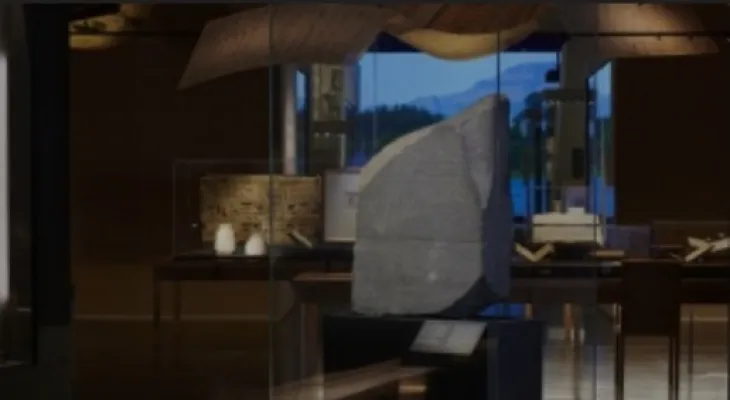Search here
Newspaper
Search here

Arab Canada News
News

Published: November 30, 2022
The controversy over who owns ancient artifacts has become an increasing challenge for museums across Europe and America, shining a spotlight on the most visited piece in the British Museum, which is the Rosetta Stone.
The inscriptions on the dark gray granite slab also became a breakthrough in decoding ancient Egyptian hieroglyphs after British imperial forces took it from Egypt in 1801.
Now, as Britain's largest museum celebrates the bicentennial of decoding the hieroglyphic script, thousands of Egyptians are demanding the return of the stone.
Monica Hanna, Dean of the Arab Academy for Science, Technology and Maritime Transport, and organizer of one of the petitions calling for the return of the stone, said that "the British Museum's possession of the stone is a symbol of Western cultural violence against Egypt."
The acquisition of the Rosetta Stone was restricted by imperial battles between Britain and France, where after Napoleon Bonaparte's military occupation of Egypt, French scholars discovered the stone in 1799 in the northern city of Rosetta. When British forces defeated the French in Egypt, the stone and more than a dozen other artifacts were handed over to the British under the terms of the 1801 capitulation agreement between generals on both sides, and it has remained in the British Museum since then.
Also, Hanna's petition, which carries 4,200 signatures, claimed that the stone was seized illegally and constitutes "war booty." This claim was echoed in a nearly identical petition submitted by Zahi Hawass, former Egyptian Minister of Antiquities, which includes more than 100,000 signatures, with Hawass stating that Egypt had no say in the 1801 agreement.
The British Museum denied this, stating in a statement that the 1801 treaty includes the signature of an Egyptian representative, referring to an Ottoman admiral who fought alongside the British against the French, and that the Ottoman Sultan in Istanbul was nominally the ruler of Egypt at the time of Napoleon's invasion.
Also, the museum added that the Egyptian government has not submitted a request for its return, and that there are 28 known copies of the same inscribed decree, with 21 of them remaining in Egypt.
The dispute over the original stone version stems from its unparalleled importance in Egyptology. The slab was carved in the 2nd century BC, containing three translations of a decree regarding a settlement between the Ptolemies who ruled at the time and a sect of Egyptian priests. The first inscription is written in classical hieroglyphs, the next in simplified hieratic script known as Demotic, and the third in Ancient Greek.
Through knowledge of the latter, scholars were able to decode the hieroglyphic symbols, as French Egyptologist Jean-François Champollion ultimately cracked the language in 1822.
The stone is considered one of more than 100,000 Egyptian and Sudanese artifacts housed in the British Museum, with a significant portion obtained during the British colonial rule over the area from 1883 to 1953.
Comments